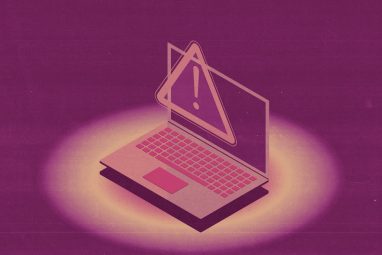Zero Trust is an Effective Approach in the Current Threat Environment, But There are Barriers
The complexity of redesigning network architecture and integrating new security technologies poses a challenge.
News
- UAE’s AI Ambitions Collide With Infrastructure Limits, Kyndryl Report Warns
- India Accelerator Rolls Out $15 Mn Fund for Saudi Market Expansion
- OpenAI Raises the Bar for Enterprise AI with GPT-5.2
- OpenAI Flags ‘High’ Cyber Risk as State AGs Warn Industry Over Harmful Chatbot Outputs
- Riyadh Air, IBM partner to Launch World's First AI-Native Airline
- Adobe Leans Into AI to Defend Its Creative Tech Lead in 2026

MITSMR Middle East Design
Since Forrester developed the model in 2009, zero trust became the gold standard among security teams working to defend against the escalating sophistication of cyber threats.
As businesses adapted to the complexity of the modern environment, zero trust architecture, which assumes no implicit trust requires verification for every access attempt, became vital to supplant the inadequate traditional perimeter-based security models.
Zero trust enhances security against advanced threats like phishing, malware, and insider attacks by continuously authenticating and authorizing users and devices, regardless of their location or network.
In the past few years, businesses in the GCC region have been embracing the zero trust model when constructing or designing digital environments and systems.
“Zero trust architecture is a robust and effective approach in the current threat environment,” says Meriam El Ouazzani, Regional Director, META, SentinelOne. “Its adaptive nature aligns well with the dynamic nature of modern IT environments, providing organizations with granular control and visibility to safeguard critical assets and data from unauthorized access and exploitation.”
It is a framework to help organizations steer toward security policies, minimizing the attack surface and reducing the impact of potential breaches. “Zero trust is a collective of technology and processes. There isn’t a single product or service you can implement that will make an organization zero trust; however, many products and services in the market support zero-trust frameworks,” says Rob Andrews, Director of Product Management at Sophos.
Rise in Cloud Services
Over the years, with the rise in cloud services, the traditional security perimeter has dissolved as organizations allow remote access from various devices and locations, making zero trust more critical.
“The emergence of cloud environments and the proliferation of mobile devices present new challenges in the region. Cyber defense strategies tailored for these environments have only been developed in the last two years. Consequently, attacks targeting these modern infrastructures are rising, underscoring the need for robust security measures,” says Nikola Kukoljac, VP – Solution Architecture at Help AG.
With data and applications dispersed across cloud environments and accessed from diverse endpoints, zero trust provides granular access controls and visibility, enhancing security posture and safeguarding against evolving threats like data breaches, insider attacks, and unauthorized access attempts.
“Zero trust principles should guide the security strategy to ensure the protection of cloud environments and mobile systems,” adds Kukoljac.
Businesses Prioritizing Zero Trust Model
Amid digital transformation initiatives and smart projects across the Middle East, adopting defense-in-depth principles is important to fortifying environments and upholding cyber resilience.
“Businesses should have a plan to migrate away from implicit trust models,” says Andrews. “Many types of security events and attacks could have either been eliminated or significantly mitigated by moving to a zero trust model and removing the implicit trust solutions of the past.”
Increasingly, businesses have come to acknowledge that embracing zero trust principles, coupled with the seamless integration of cutting-edge cybersecurity technologies and the recalibration of governance, risk, and compliance strategies based on these principles, presents the most methodical pathway forward for organizations, adds Kukoljac.
Result? Organizations are increasing the uptake of the corresponding investments in zero trust security solutions as cyberattacks continue to pose significant risks.
“Businesses in the Middle East are increasingly investing in products and technologies that align with this approach,” says El Ouazzani. “This includes deploying solutions for continuous authentication, micro-segmentation, and security analytics to enforce strict access controls and monitor network activities effectively.”
Barriers in Adoption
However, there are barriers to embracing zero-trust architecture, which is often perceived as complex, particularly for organizations without a clear adoption strategy.
“Legacy systems may lack compatibility with modern security protocols, necessitating upgrades or replacements,” says El Ouazzani. “The complexity of redesigning network architecture and integrating new security technologies poses a challenge.”
According to Andrews, one of the biggest challenges is moving past the status quo when dealing with established networks and info-sec practices. “Executive sponsorship and thought leadership are critical to migrating from legacy approaches to a modern zero-trust approach.”
“The business should clearly understand its goals and the outcomes it wants to see with zero trust before a plan is formulated for adoption,” he adds.
Adopting a zero trust architecture entails a substantial financial commitment to integrating various advanced technologies for fortifying security postures.
“It also demands the development of new policies and procedures and an investment in reshaping organizational mindsets, extending beyond the IT and security teams to encompass the entire organization,” says Kukoljac.
Overcoming these barriers requires strategic planning, executive buy-in, adequate training, and phased deployment approaches to gradually transition to a zero-trust framework while effectively addressing organizational challenges.
At the NextTech Summit, the region’s foremost summit focusing on emerging technologies, global experts, MIT professors, industry leaders, policymakers, and futurists will discuss Zero Trust, Quantum Computing, Human-Machine Collaboration, and Industrial Metaverse, among many other technologies and their immense potential.





